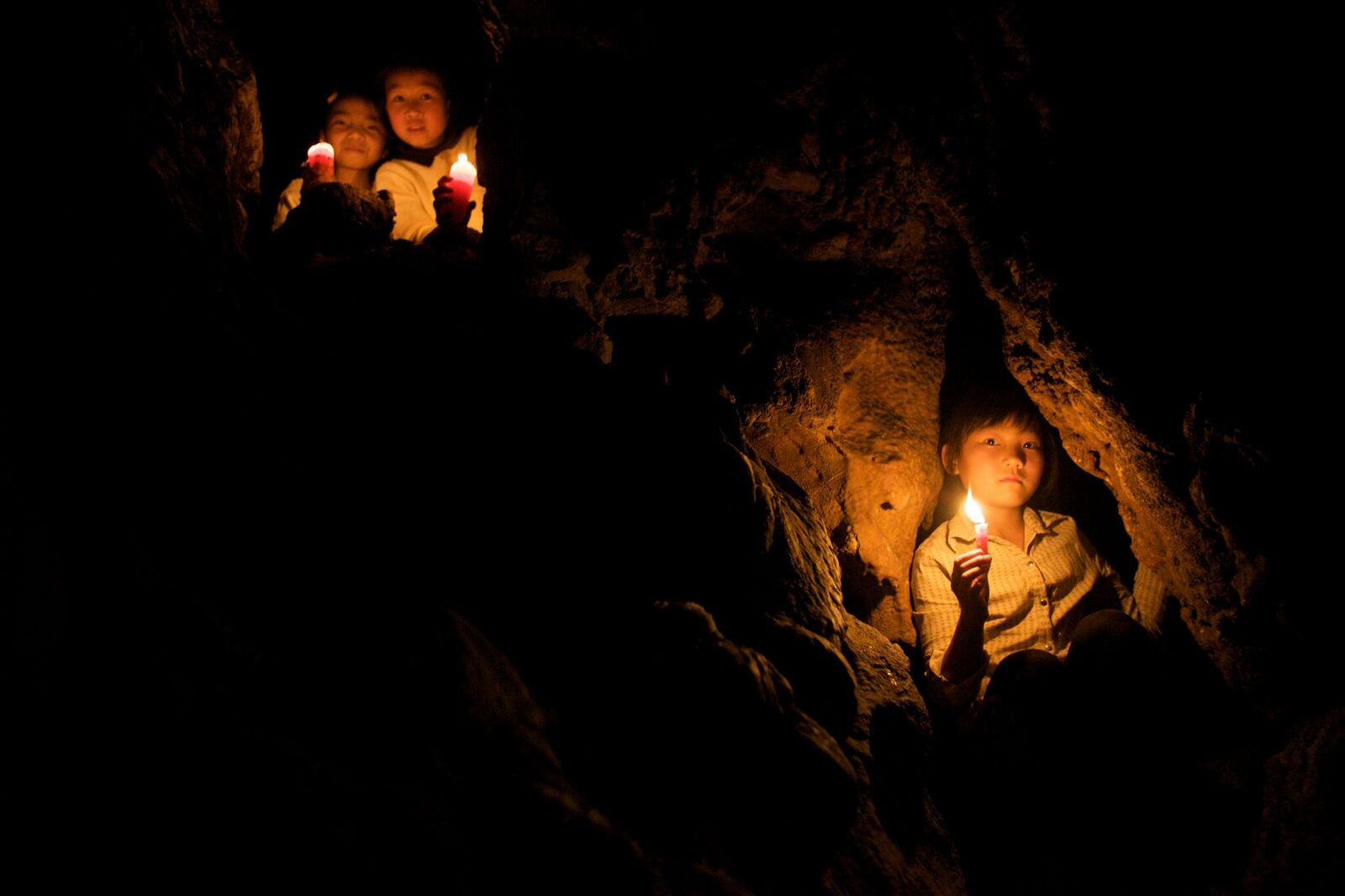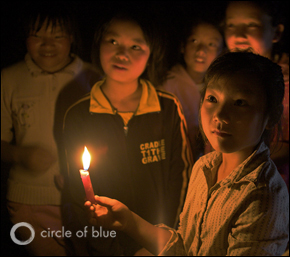A stroll in the mountains connects young girls to a spiritual past.

Schoolgirls perch in the caverns of Yuan Shi Dong, the “Fate Lion Cave,” where a Buddhist temple stands. Photo © J. Carl Ganter
By Christina Larson, Special to Circle of Blue
Zhou Mungqiu, who is 11 years old and whose name means “dream of spring,” pointed up to the top of Yuan Shi Dong, the “Fate Lion Cave,” where a fragile sliver of light descended from a small hole. Beside her, Shi Shanhong, whose name means kindness, also looked up and giggled.
While both girls are in the same fourth grade class, in other regards their lives are very different — save for the common bond of being playmates in a mysterious cave that resembles a lion at its mouth and where a Buddhist temple stands.
According to a legend, about 200 years ago Buddha appeared to four elders of a nearby village out for a stroll in the mountains. He told them he would take them to a place they had never been. “How is that possible,” one woman asked. “We have walked this hillside hundreds of times.” But Buddha led them to the cave (see more stunning pictures of karst caves in our slideshow), and the four entered for the first time, astonished. In the strange forms hanging from the ceiling, they believed they saw the shapes of many deities and animals in the rock.
One spring afternoon, two centuries later, the two little girls carried candles to light their way inside Yuan Shi Dong, casting flickering shadows down the long corridor. They scrambled quickly in the dim light; their lack of hesitation showed they’d been here many times before and knew the way.
Zhou Mengqiu lives in the village nearby. She comes from a family of farmers. When her mother comes to market to sell beef and potatoes, Mengqiu slips inside the cave temple to play.
Shi Shanhong, however, is embarrassed to talk about her family. It is only those people she trusts who know the truth. Shi is an orphan and lives in the Buddhist temple near Yuan Shi Dong’s entrance. The head nun found her at the temple doorstep when she was 7 weeks old. There was a dramatic red birthmark on her face. Each year the color fades more and more; now it is barely visible.
The two girls come here, as people have for hundreds of years, to tell stories about the caves and the creatures of the mountains and events that happened (or might have happened) long before they were born. Inside the cave, rocks are painted bright colors, lending the hideaway to games of the imagination.
Before scientists offered geologic explanations, people told stories about the origins of Yuan Shi Dong and other caves. Those stories — some of haunted caverns, some of poets’ getaways — are as different as the landscapes themselves. Even today, enduring legends illustrate how people’s lives, even the lives of little girls, are intertwined with geography.
There is an inscription on one wall leading into the Buddhist temple near Yuan Shi Dong, but even the head nun does not remember who placed the lettering there: “People travel thousands of miles, many die in other lands, but souls will return here.”
Christina Larson is a contributing editor at Foreign Policy magazine.
Circle of Blue provides relevant, reliable, and actionable on-the-ground information about the world’s resource crises.





